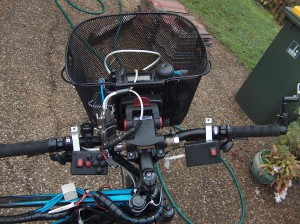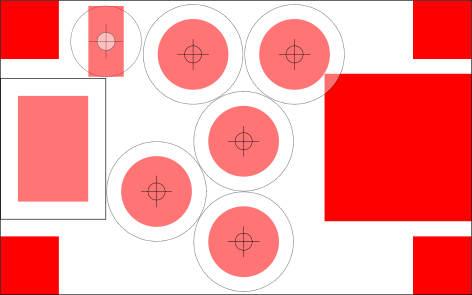So, many years ago, late 2010 to be exact, I got the crazy idea to put a HF radio station on a bicycle. This has been a project that has been going many years now.
Early experiments were with a Yaesu FT-897D, a 9Ah SLA battery and a 6’ 27MHz whip from Jaycar. This worked, but was clumsy, and the battery didn’t have much puff. I revised the set-up to use a 40Ah LiFePO₄ pack (4 40Ah Thundersky prismatic cells in series) which helped with the battery life, but still everything was loose in an open basket, so no good in wet weather and definitely not secure.
I replaced the 897D with a Yaesu FT-857D and eventually moved to 10Ah LiFePO₄ packs (Lifebatt) which made things more manageable. The station everyone sees today (VK4MSL/BM Mk3) is basically from about mid-2012 when I bought my current mountain bike. The biggest difference here is I’ve now got 20Ah batteries.
It’s been a while since I’ve done HF bicycle mobile properly. Bicycle Queensland has approached Brisbane WICEN to assist in this year’s Yarraman to Wulkuraka bike ride.
WICEN generally use 2m and 70cm, and 70cm was a sticking point for me in the past, and so after a quick experiment with @vk4mdl’s Maldol dual-band whip, decided to bite the bullet and buy a couple of new antennas. I wound up buying a MyDEL VH-6 for the HF side, and a Diamond NR-7900 for the VHF/UHF side. (Both were purchased through Andrews Communications in Sydney.)
Last Thursday they turned up, and we got to fitting those. @vk4mdl made up an angle bracket for the new VHF/UHF antenna while I soldered new coax and sockets up. I spent some time Saturday tuning everything up. The new antennas performed well.
Sunday we did a rekkie run from Benarkin through to Linville then on to Moore. The station performed well on the trail when everything behaved itself. Good contact was maintained on both 2m with 30W FM and on 10m using 100W SSB. That said, it wasn’t all smooth sailing:
- The earpiece connection to the head unit has broken. (Knew about this weeks ago, just haven’t gotten around to fixing it.) I’ll need to take the head unit apart and re-solder that again. Maybe use some better quality wire.
- The left-hand control panel started to rattle loose. This was found (whilst inspecting it at Linville) to be the plastic on the rear of the box giving way.
- Part way between Benarkin and Linville, a fault developed on the control panel on the handlebars, causing a short on the “down” button. The “right” button wire also broke loose. During the run into Linville, this caused all buttons on the head unit to “lock up”. PTT still worked, but I could only turn the radio on/off, couldn’t change frequencies or anything. I worked around this at Linville by snipping the wire to the errant “down” button and doing without it.
- Nearing Moore, the VHF/UHF antenna mount fell off the right-side bracket. This is possibly a symptom of the bracket metal being too thick: it was a scrap piece we found around the hackerspace, and we had to sand it a bit to thin it out a bit.
Fixing (1) is easy, just tedious, and I just worked around the problem using the extension speaker I built before, but it’d be nice to hear stations through the headset in my helmet.
For (2) and (3), I have a couple of options. I could buy another box from Jaycar, move the buttons/switches across to the new case and solder it all up. The offending keypad is visible on the left in this photo:

3D printing probably won’t make a strong-enough part for this sort of mount, but the mount could be moulded. There’s also a question of whether I use the same buttons, or go for something more compact, perhaps a joystick button if I can get one that’s suitably waterproof.
To fix (4), we’ve purchased a replacement bracket which is nearly identical to the one I have on the left side… which is a bog-standard ~4" square angle bracket from Bunnings… about 2mm thick zinc-plated metal. Not as thick as the bracket that’s there, but should be easier to bolt the antenna mount to.
So, looks like some further refurbishment is in order.









